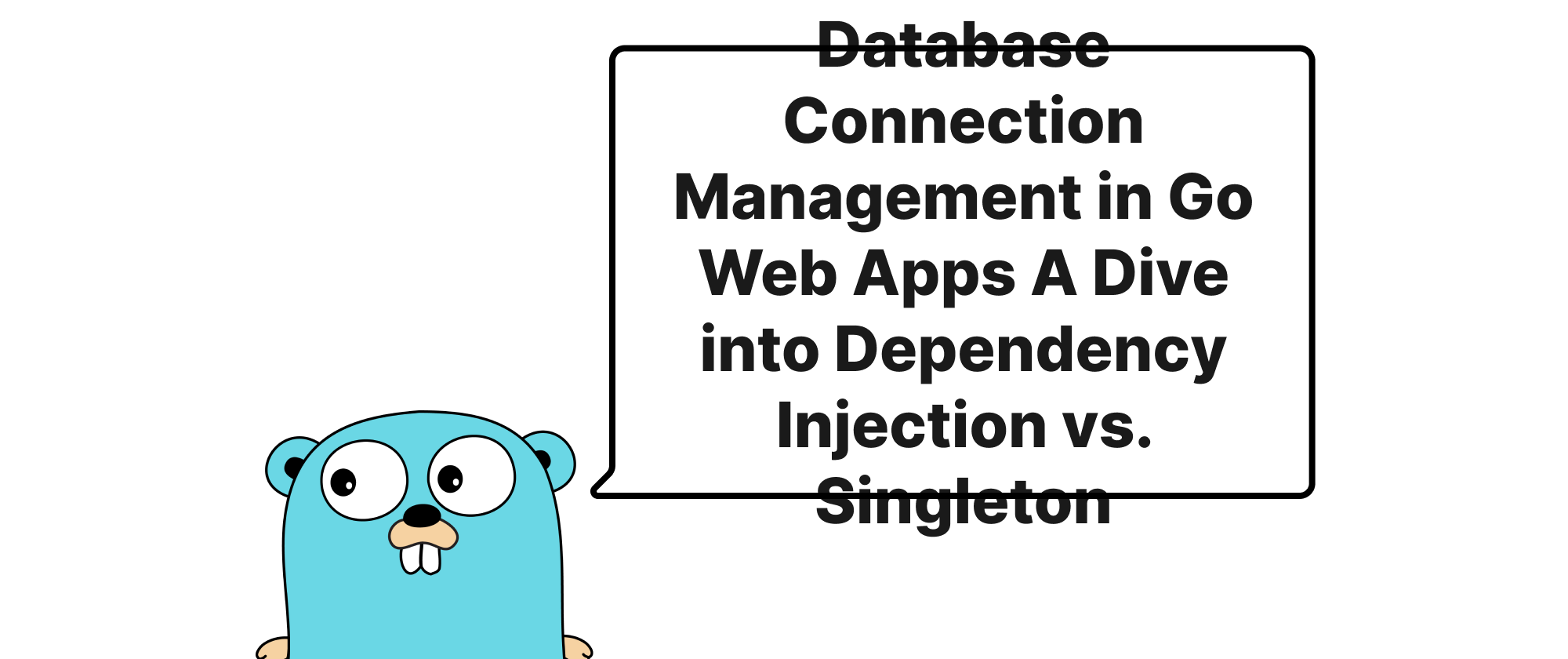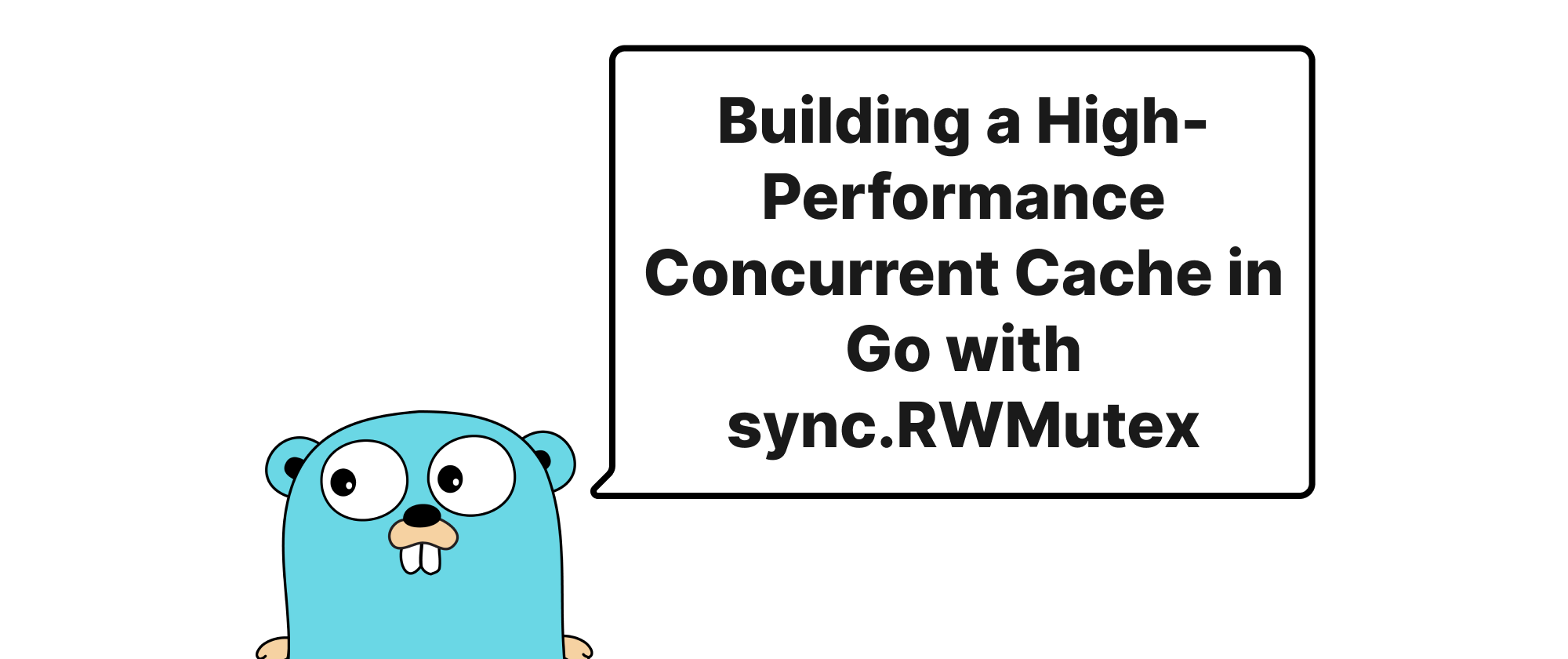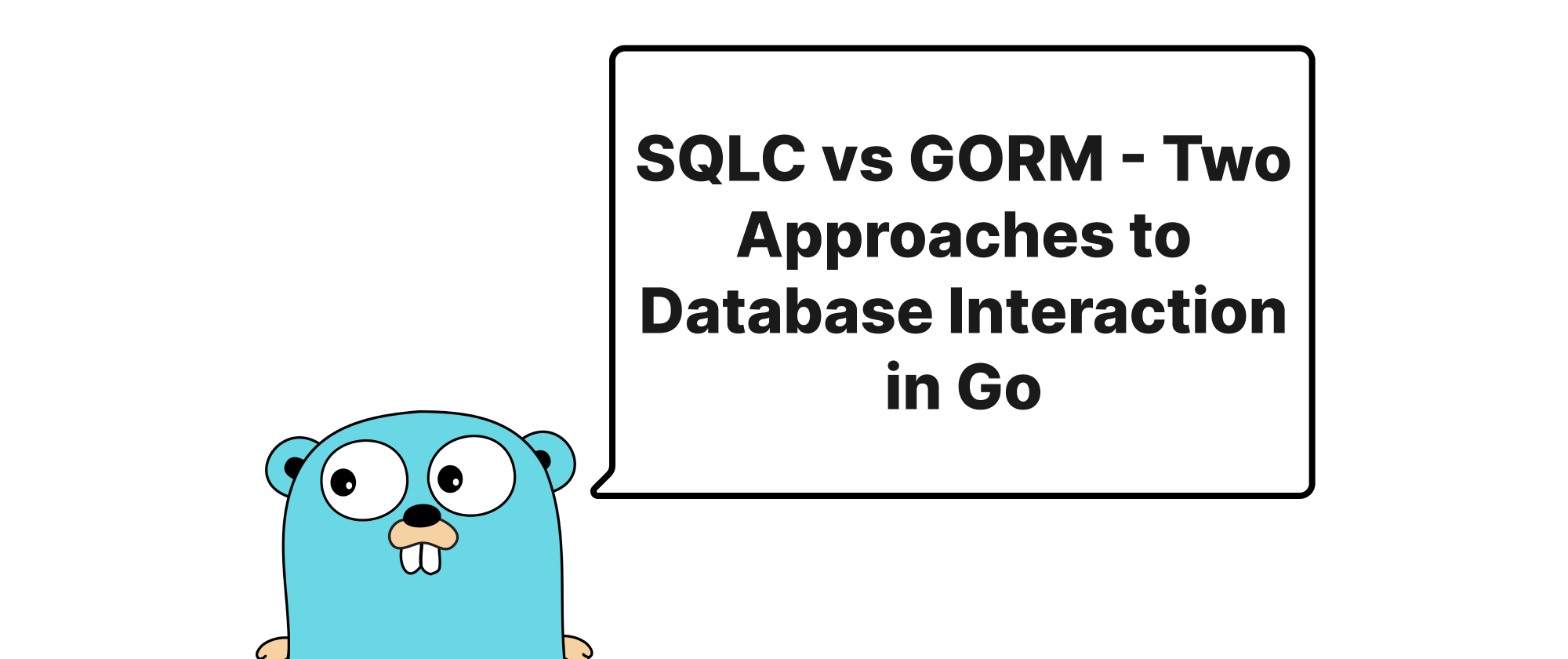Database Connection Management in Go Web Apps A Dive into Dependency Injection vs. Singleton
Ethan Miller
Product Engineer · Leapcell

Introduction
In the world of Go web development, managing database connections is a fundamental concern. An sql.DB instance in Go is designed to be long-lived, thread-safe, and should be reused across your application rather than opened and closed for each request. The question then arises: how do we correctly instantiate and provide this sql.DB instance to the various parts of our web application, such as handlers and services? This seemingly simple task often sparks debates between two common approaches: the Singleton pattern and Dependency Injection. Understanding the nuances of each and their implications for testability, flexibility, and maintainability is crucial for building robust and scalable Go applications. This article will delve into both approaches, examining their core principles, practical implementations with sql.DB, and help you determine the "right" way for your projects.
Core Concepts
Before we dive into the comparative analysis, let's establish a common understanding of the key concepts that will be central to our discussion.
sql.DB in Go: This is Go's standard library type for representing a pool of database connections. It manages the lifecycle of connections, including opening, closing, and reuse. It is inherently thread-safe and designed to be created once and shared throughout the application. Mismanaging sql.DB can lead to connection leaks, performance bottlenecks, or even application crashes.
Singleton Pattern: A design pattern that restricts the instantiation of a class to one "single" instance. Its intent is to ensure that a class has only one instance and provides a global point of access to it. In Go, this typically involves a package-level variable initialized once, often within an init function or using sync.Once.
Dependency Injection (DI): A software design pattern that implements inversion of control for resolving dependencies. Instead of components creating their dependencies, dependencies are provided to them (injected) from an external source. This promotes loose coupling, making components more independent, easier to test, and more flexible to changes. Common DI techniques include constructor injection, setter injection, and interface injection.
Singleton Pattern for sql.DB
The Singleton pattern is often an intuitive first approach for managing a shared resource like sql.DB. Since sql.DB should ideally have only one instance across the application, a singleton seems to fit perfectly.
Principle
The idea is to have a single, globally accessible instance of sql.DB. This instance is typically initialized once at application startup and then directly accessed by any part of the code that needs it.
Implementation Example
package database import ( "database/sql" "log" "sync" _ "github.com/go-sql-driver/mysql" // Replace with your database driver ) var ( db *sql.DB once sync.Once ) // InitDB initializes the database connection pool. // It uses sync.Once to ensure the initialization happens only once. func InitDB(dsn string) { once.Do(func() { var err error db, err = sql.Open("mysql", dsn) // Or "postgres", "sqlite3", etc. if err != nil { log.Fatalf("Failed to open database: %v", err) } // Optional: Set connection pool parameters db.SetMaxOpenConns(20) db.SetMaxIdleConns(10) db.SetConnMaxLifetime(0) // connections are reused forever if err = db.Ping(); err != nil { log.Fatalf("Failed to connect to database: %v", err) } log.Println("Database connection pool initialized") }) } // GetDB returns the initialized database instance. // Panics if InitDB was not called first. func GetDB() *sql.DB { if db == nil { log.Fatal("Database not initialized. Call InitDB() first.") } return db } // CloseDB closes the database connection pool. func CloseDB() { if db != nil { if err := db.Close(); err != nil { log.Printf("Error closing database: %v", err) } log.Println("Database connection pool closed") } }
And in your main.go:
package main import ( "fmt" "log" "net/http" "os" "yourproject/database" // Assuming your database package is here ) func main() { // Initialize database dsn := os.Getenv("DATABASE_DSN") if dsn == "" { log.Fatal("DATABASE_DSN environment variable not set") } database.InitDB(dsn) defer database.CloseDB() http.HandleFunc("/users", listUsersHandler) log.Println("Server starting on :8080") if err := http.ListenAndServe(":8080", nil); err != nil { log.Fatalf("Server failed: %v", err) } } // listUsersHandler accesses the database directly via the singleton. func listUsersHandler(w http.ResponseWriter, r *http.Request) { db := database.GetDB() // Direct access rows, err := db.Query("SELECT id, name FROM users") if err != nil { http.Error(w, "Failed to query users", http.StatusInternalServerError) log.Printf("Error querying users: %v", err) return } defer rows.Close() // ... process rows and send response fmt.Fprintln(w, "Users listed successfully (via singleton)") }
Application Scenarios and Drawbacks
The Singleton pattern is straightforward to implement and provides a quick way to get your application running. It's often seen in smaller applications or prototypes where simplicity is prioritized.
However, it comes with significant drawbacks:
- Global State: It introduces global state, making it harder to reason about code, as any part of the application can modify the shared
dbinstance. - Testability: Unit testing functions or handlers that rely on
database.GetDB()becomes difficult. You can't easily mock or substitute thesql.DBinstance for a test database without potentially affecting other tests or requiring complex setup/teardown. This typically leads to integration tests instead of true unit tests. - Flexibility: It makes it hard to use different database configurations (e.g., a read replica
sql.DBand a write mastersql.DB) within the same application instances without resorting to more complex singleton variations. - Hidden Dependencies: The dependency on
sql.DBisn't explicit in function signatures, making code harder to understand and refactor.
Dependency Injection for sql.DB
Dependency Injection (DI) offers a more robust and flexible alternative to the Singleton pattern, especially as applications grow in complexity.
Principle
Instead of components looking up or creating their dependencies, those dependencies are "injected" into them. For sql.DB, this means passing the sql.DB instance as an argument to functions, methods, or struct fields that require it.
Implementation Example
Let's refactor our listUsersHandler to use DI.
First, we define an interface that our sql.DB operations will use. This is a common practice in Go DI to promote even looser coupling and facilitate mocking.
// database/db_interface.go package database import "database/sql" // Queryer is an interface that abstracts basic database query operations. // We only include methods our handler needs for now. type Queryer interface { Query(query string, args ...interface{}) (*sql.Rows, error) // Add other methods like Exec, QueryRow if needed } // Our actual *sql.DB implements Queryer implicitly. // We don't need to explicitly say `type DB struct { *sql.DB }` for this.
Now, redefine the handler to accept a Queryer interface. This pattern is often achieved by creating a "repository" or "service" struct that holds the dependency.
// main.go (continued) package main import ( "fmt" "log" "net/http" "os" "yourproject/database" ) // UserService is a service that handles user-related operations. // It depends on a database.Queryer. type UserService struct { db database.Queryer } // NewUserService creates a new UserService with the given database connection. func NewUserService(db database.Queryer) *UserService { return &UserService{db: db} } // ListUsersHandler is an HTTP handler method for UserService. func (s *UserService) ListUsersHandler(w http.ResponseWriter, r *http.Request) { rows, err := s.db.Query("SELECT id, name FROM users") if err != nil { http.Error(w, "Failed to query users", http.StatusInternalServerError) log.Printf("Error querying users: %v", err) return } defer rows.Close() // ... process rows and send response fmt.Fprintln(w, "Users listed successfully (via dependency injection)") } func main() { dsn := os.Getenv("DATABASE_DSN") if dsn == "" { log.Fatal("DATABASE_DSN environment variable not set") } // 1. Create the actual sql.DB instance here, once. // This part is similar to the singleton's initialization, but it's not global. db, err := sql.Open("mysql", dsn) // Replace with your driver if err != nil { log.Fatalf("Failed to open database: %v", err) } defer db.Close() // Ensure the connection is closed when main exits db.SetMaxOpenConns(20) db.SetMaxIdleConns(10) if err = db.Ping(); err != nil { log.Fatalf("Failed to connect to database: %v", err) } log.Println("Database connection pool initialized") // 2. Inject the db instance into the UserService. userService := NewUserService(db) // Dependency Injection occurs here // 3. Register the handler. Note: we are passing the method directly. http.HandleFunc("/users", userService.ListUsersHandler) log.Println("Server starting on :8080") if err := http.ListenAndServe(":8080", nil); err != nil { log.Fatalf("Server failed: %v", err) } }
Application Scenarios and Advantages
Dependency Injection shines in scenarios where maintainability, testability, and flexibility are paramount.
Advantages:
-
Testability: By injecting an
interface{}, you can easily mock the database in unit tests. You can create a mock implementation ofdatabase.Queryerthat returns predictable data or errors, without actually hitting a database.// In a _test.go file type MockQueryer struct{} func (m *MockQueryer) Query(query string, args ...interface{}) (*sql.Rows, error) { // Return dummy rows for testing // This part needs a bit more setup to genuinely mock *sql.Rows, // but the principle is clear: we control the dependency. return &sql.Rows{}, nil // Simplified for brevity } func TestUserService_ListUsersHandler(t *testing.T) { mockDB := &MockQueryer{} userService := NewUserService(mockDB) req, _ := http.NewRequest("GET", "/users", nil) rr := httptest.NewRecorder() userService.ListUsersHandler(rr, req) if status := rr.Code; status != http.StatusOK { t.Errorf("handler returned wrong status code: got %v want %v", status, http.StatusOK) } // Further assertions on response body } -
Explicit Dependencies: Dependencies are declared explicitly in struct fields or function parameters, making the code easier to understand and reason about.
-
Flexibility: You can easily swap out different implementations of
Queryer(e.g., a realsql.DB, a read-only replicasql.DB, an in-memory database for testing, or a different database driver) without changing theUserServicelogic. -
Loose Coupling: Components are loosely coupled, meaning changes to one component (e.g., how the
sql.DBis configured) don't directly impact others, as long as the interface contract is maintained. -
Concurrency Safety: When
sql.DBis injected as a dependency, its thread-safety characteristics are preserved as long as the instance itself is properly managed (whichsql.DBdoes internally). The injection pattern doesn't introduce new concurrency issues but rather helps manage the shared resource safely.
Which Approach is "Correct"?
While both patterns can manage an sql.DB instance, Dependency Injection is generally the preferred approach for non-trivial Go web applications.
- For small utilities or quick scripts: A well-implemented Singleton (using
sync.Once) might be acceptable due to its simplicity. - For robust, testable, and maintainable web applications: Dependency Injection, especially combined with interfaces, provides superior flexibility and testability. It aligns better with Go's philosophy of explicit dependencies and small, focused interfaces.
The overhead of setting up DI might seem slightly higher initially, but the benefits in terms of long-term maintainability, refactorability, and confidence in your code (through effective unit testing) far outweigh this cost. It makes your application more adaptable to change and easier for new team members to understand and contribute to.
Conclusion
Managing sql.DB in a Go web application involves choosing a strategy for making its single, long-lived instance available to different parts of your code. While the Singleton pattern offers simplicity, it introduces global state, hindering testability and flexibility. Dependency Injection, by explicitly providing dependencies, leads to more modular, testable, and maintainable code. For any serious Go web application, embracing Dependency Injection with interfaces is the "correct" and most beneficial approach for managing database connections. It fosters a codebase that is easier to reason about, test, and evolve.


